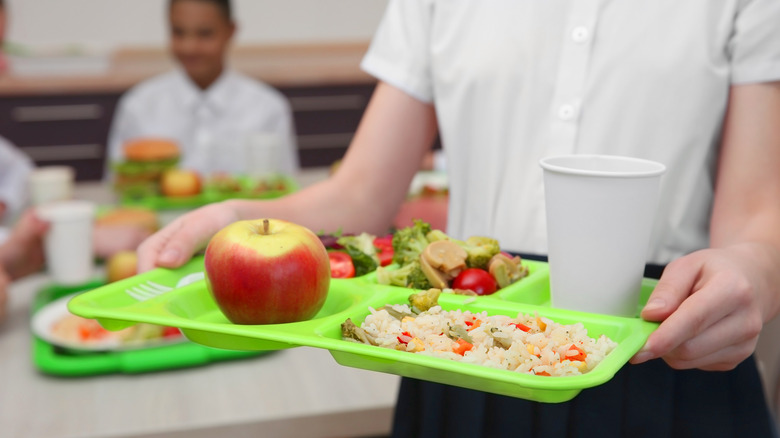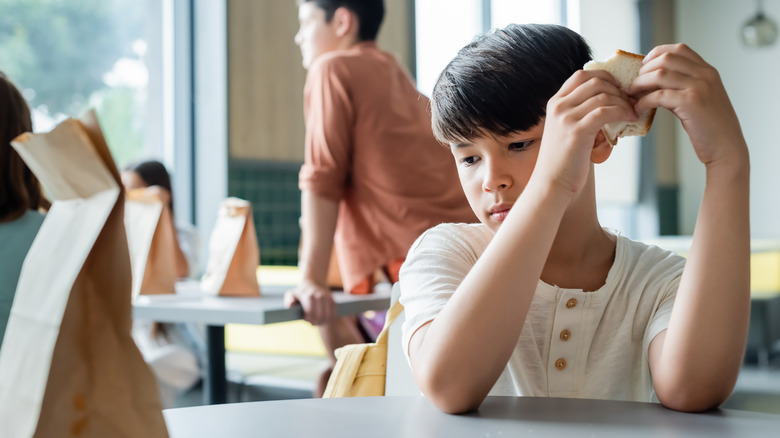Why Needy School Children Can't Take Advantage Of A Free Lunch Program
Since 1946, the U.S. has been committed to providing free or reduced-price school lunches to children of low-income families (via USDA). By the upcoming school year however, some of those children may be left hungry. According to Forbes, the number of families experiencing food insecurity went up by 20% because of the economic impact of COVID-19. As a result, the government made lunch free for all students both in 2020 when the pandemic started, and in 2021 as it continued. This is part of the P-EBT program (Pandemic Electronic Benefits Transfer). Under the program, in addition to free school lunch, the government also supplements those who qualify with food stamps providing funds to purchase food when school is out of session.
While these benefits are still in effect, The Washington Post reports that some states have chosen to opt out of them. That unfortunately means that students in many districts can't take advantage of the free lunch they would otherwise be eligible for.
Why don't some states want to participate in the free lunch program?
Despite the fact the USDA, who administers the P-EBT program, is actively pushing for state governments to apply for the benefits, many refuse to comply, The Washington Post explains. School administrators argue that the combination of virtual and in-person learning makes it harder to regulate. Because of COVID guidelines, students often have to attend class from home, sometimes on an irregular basis. If they can't access a cafeteria, they can't access their free lunch that day, which means administrators have to mail out reimbursements. "The main problem is a staffing issue and coordinating all the parties in order to gather the information," school nutrition director Donna Martin, who works out of Georgia, explained to the Post.
For children who can't get their P-EBT allotted lunch, Colorado Public Radio says the best thing parents can do is fill out the application for free and reduced-price lunches. State governments rely on student counts in order to decide how necessary free lunch is for its districts. The more eligible families that report, the more likely the P-EBT benefits will be made available.

